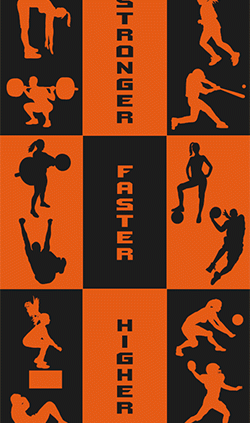Programming Plyometrics and Speed Training into Your Program
There are many facilities that produce speed training as a product or a service. This is a great tool for any athlete, I mean who doesn’t want to become fast? While that is true and also a necessity as an athlete, you have to realize how to get there. While speed training is very important because you need to learn proper sprinting mechanics, proper starting and the ability to work on stride rate and length. With that all said the truth is you need to work on your plyometric training in order to become that fast athlete. Athletes who typically just do speed camps or speed training fail in these areas below.
- Tight hamstrings and hip flexors
- Lack of power
- Poor core strength
These factors listed above allow athletes to become that fast and powerful athlete. Question is how do I get good at all those. Well you need to do plyometric training prior to your speed training. This is for 3 main reasons.
- Teaches you the ability to load and explode in your movements
- Teaches you triple extension which is a great power producer
- When you super set plyometrics with core, it will allow you to have great core strength which is key for sprinting
Now if we take speed training and just do that alone you will not teach your body how to become efficient with power. There is a great correlation between athletes who are extremely fast and athletes who can jump high. This is because when you jump train properly you teach the body how to become powerful through your ankles, knees and hips. In turn a great sprinter knows how to efficiently put or transfer the power in the ankle knees and hips to the ground. Without the ability to load in that area you will never become faster. You might be fast, but to become faster you have to learn how to load and unload power. With plyometric training that is possible. The whole goal is power production and teaching the body how to load power and unload power.
While jump training is a huge part of the programming at AllSports, there is more to training than just jump training. Athletes in general lack a good assessment. A good assessment will allow you to focus on your weakness to compliment your strength. In the list above flexibility is a big concern for most athletes. Having a lack of flexibility can be detrimental to an athlete because of injury and also the ability to teach the body proper movement. At AllSports we take pride in working athletes through a specific order with plyometrics being in the top three of our concern. Below is how we like to program our daily classes for athletes.
8 Main Factors of Sports Performance
- Fitness Evaluation – (shows us your balance, stability, strength and core strength)
- Proper warm up – (pre hab, static stretching, activation, dynamic)
- Plyometric training – (jump training including proper landing and take off, how to load your body and become explosive)
- Core training – (mixed in with our plyomtrics teaching the body how to have power through the core)
- Speed training – teaching mechanics of movement and then learning to load the movement when strong enough
- Agility training – learning to decelerate, cut effectively and move efficiently in small spaces
- Strength training – starting with explosive movements/Olympic lifting movements to teach the body force production through triple extension, total body training making sure were strong through legs up through the body.
- ESD – Energy System Development which is conditioning
These 8 factors are the cornerstone of the programming. Implementing these into your program will not only allow you to become a better overall athlete, but become faster and more powerful. The goal of any athlete is or should be to become the most explosive player on the field of play with the ability to use or sustain that over a long period of time. Putting some plyometric training or jump training in your program will take you to the next level as an athlete.





